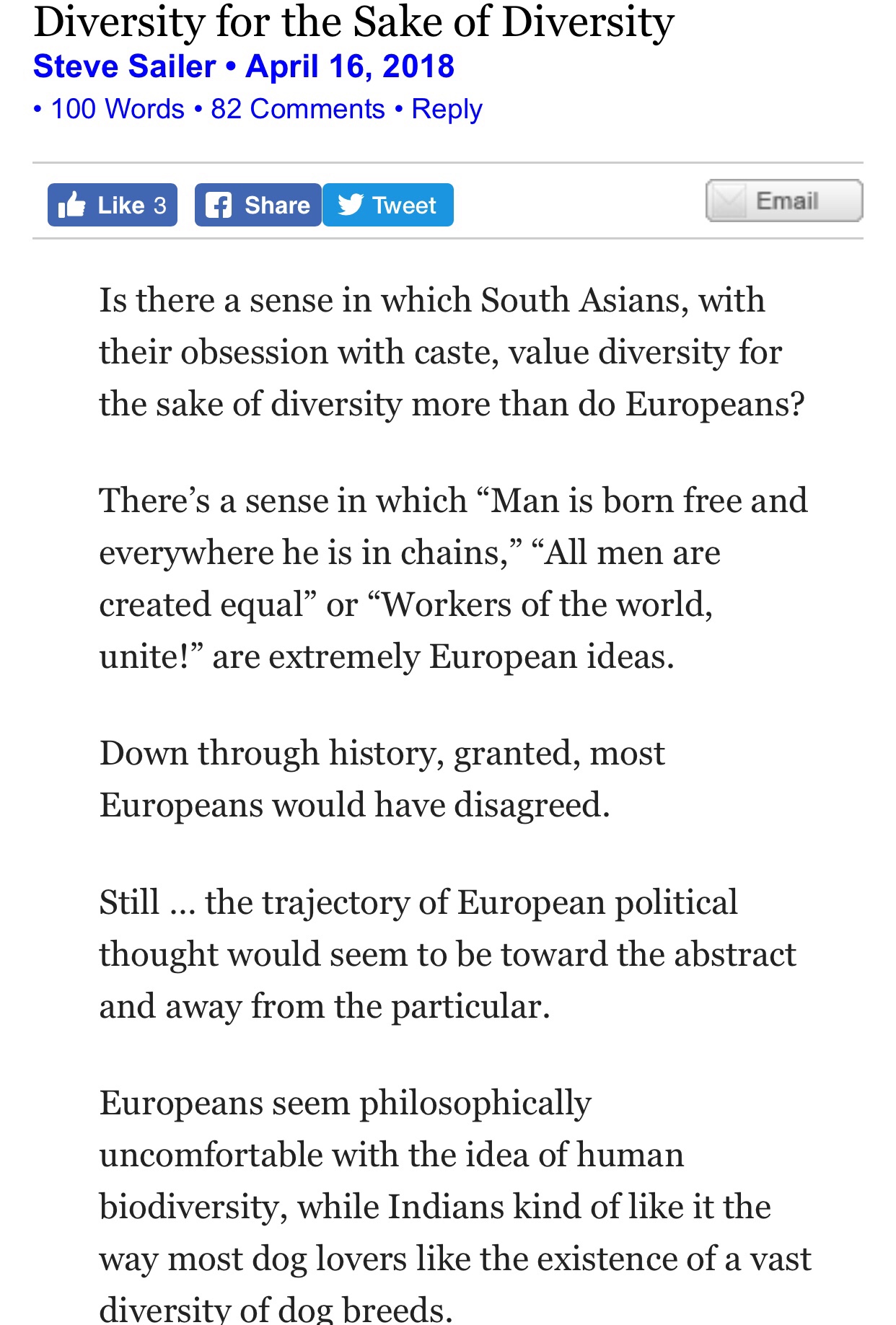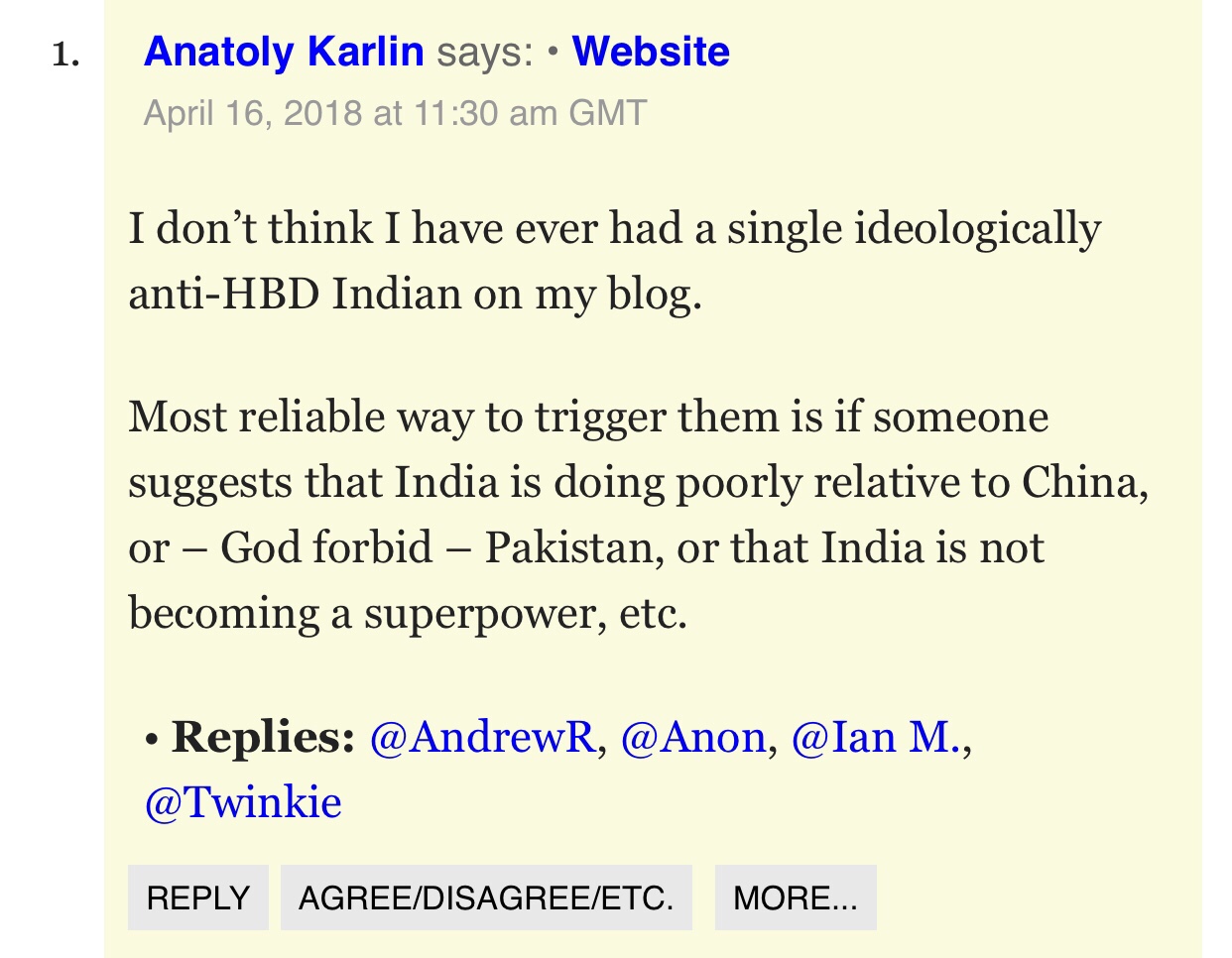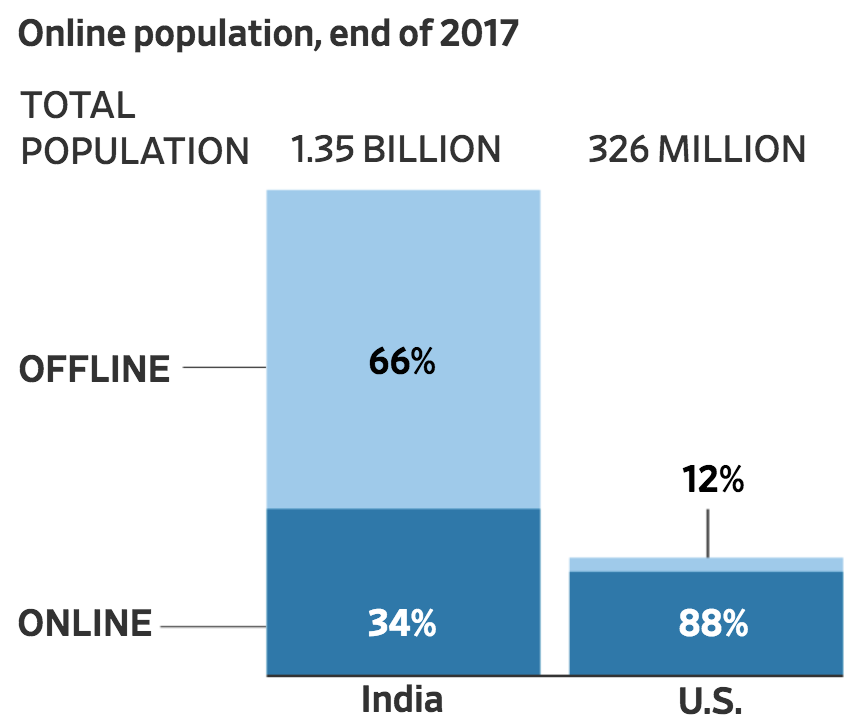
The image is from a WSJ story: Why Tech Titans Are Betting on India, in 14 Charts.
Semitised Iran, Aryanised India
There had once been a comment on this blog that the Kashmiris were more Aryan in cultural heritage than the Persians (even if the genetic contribution was the same). At the time I was a bit surprised but in retrospect when I think to modern Persian identity and the Iranian super-strate on top of it (what is Iran; the plateau, the people or the language family?), it’s astonishing to see that most of the influences are Safavid.
When I deconstruct my Persian national identity apart from the Sassanians, Achaemenians and Zoroastrians; it’s really to do with Sa’adi, Ferdowsi and Hafez. The evolution of Persian culture, under the rubric of Islam, has been so complete that as an example even the most hardcore Persian nationalists wouldn’t dare mess with the alphabet.
The Persian language, which is absolutely fundamental to Iranian identity, has wrapped itself around the Arabic alphabet. The pride in the “Aryan racial heritage” is at best correlated with being light skinned etc (in the West lots of Iranians like to bandy about being Aryan to fit in; good for them). However the Aryan heritage doesn’t really figure in a substantial way about what it means to be Persian.
In contract to India where the Aryan heritage is dominant and uninterrupted, constantly tussling with the Arabic-Abrahamic faiths (Islam is equally Arabic as it is Abrahamic; to be a part of the House of Islam is to accept that Arabs are primus inter pares, not exactly equivalent to Brahmins).
Of course Persian is an “Aryan language” but to deny its Semitisation and the glories that the Arabic infusion brought; as well as being the lingua franca (in a literal sense Persians has always had some similarity to France & French culture; is Iran the France of West Asia?) of the Great Gunpowder Empires.
The irony of course is that while Iran is an explicitly Aryan term; India probably is not. While Sindhu is a Sanskrit name for sea, it’s origins are obscure (am to be corrected).
The Conundrum that is Husain Haqqani
I was recently asked by AnAn to write a detailed post about Mr. Hussain Haqqani (henceforth HH) and his three books that I’ve read. I find it difficult to write about someone who is still active in his field of work and someone who arouses so much anger and partisanship among the commentariat in Pakistan. I decided to write about things that I know definitively, publicly available information about him and testimonies from two reliable witnesses about HH and then briefly discuss the three books (Pakistan: Between Mosque and Military, Magnificient Delusions and India vs Pakistan: Why Can’t we just be friends) that I’ve read (I just started reading his fourth one, ‘Reimagining Pakistan’). It is hard to label HH as a turncoat or opportunist because most major politicians in Pakistan changed course in their political life starting with Zulfiqar Bhutto, followed by Mian Nawaz Sharif, Benazir Bhutto(BB) and Imran Khan. People and their ideas evolve or else, they are ossified and become part of history while they are alive (Exhibit A: Most of the left-wing politicians of Pakistan).
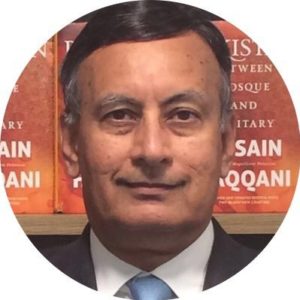
HH comes from a Muhajir family based in Karachi and went to Karachi University where he was an active member of Islami-Jamiat-Tulaba (IJT), the student-wing of right-wing, religio-political party, Jamaat-e-Islami (JI). He claimed in Magnificient Delusions that he stopped students from burning down the American Consulate in Karachi in 1979 when Grand Mosque in Mecca was seized by ultra-Wahabi rebels and the conspiracy theorists put the blame on the US initially (the Embassy in Islamabad was burnt down by a mob of students). His claim has been debunked by several members of IJT at the time. He worked as a journalist for a few years after graduation. In the late 1980s, he was a media-consultant for Nawaz Sharif, the center-right politician from Punjab who rose to prominence as Punjab’s finance minister under General Jilani’s governorship (1980-85) and later served as the Chief Minister of Punjab (1985-90). Nawaz Sharif was part of an Islamist alliance, Islami Jamhoori Ittihad (IJI) which opposed Benazir Bhutto’s Pakistan Peoples Party (PPP) in the 1988 elections. It is beyond doubt that the character of Benazir Bhutto and Nusrat Bhutto was mercilessly attacked during the election campaign. Helicopters were used to throw fliers over major cities in Punjab with explicit photos of the Bhutto ladies to malign their reputations. According to witness number 1, he saw HH in New York during that campaign where HH was offering nudes of Benazir Bhutto to anyone who was interested to see them. IJI still couldn’t win the federal election and ended up winning in Punjab, where Nawaz Sharif assumed the Chief Minister-ship.
Due to Palace intrigues and constant bickering between Punjab and the Federal Government and unrest in Sindh, BB’s government was dismissed by Ghulam Ishaq Khan, the President, after twenty months. In the ensuing elections, IJI succeeded in winning the election (there was massive rigging taken place on orders of the Presidency and funds were distributed to various IJI politicians, details of which can be found by googling ‘Mehran Bank Scandal’). HH served as Sharif’s spokesman till 1992 until he was sent to Sri Lanka as Pakistan’s ambassador. In 1993, the Sharif Government was dismissed by President Khan (with prodding and backroom deals by BB and Co). HH flew back from Sri Lanka and became a spokesman for the BB government that followed (1993-1996).
In 1996, the second BB government was dismissed by President Laghari and Nawaz Sharif’s party started ruling again. It was toppled during October 1999 and General Musharraf became the ‘Chief Executive’ of Pakistan. According to witness number 2, he saw HH begging Musharraf (or one of his generals) for the Information Ministry. The request was denied and HH spent a few years running a consultancy. In 2002, he arrived in Washington DC, as a guest of Carnegie Endowment for International Peace. In 2004, he joined Boston University as an Associate Professor of International Relations. He also headed a project by Hudson Institute on Islam and Democracy. Post-9/11 was a time in which the issue of Islam and Democracy was selling quite well in the ‘West’.
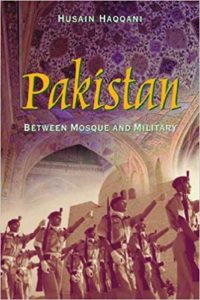
In January 2005, ‘Pakistan: Between Mosque and Military’ was published. It is a very good book detailing the history of Pakistan and the Mullah-Military Nexus that rules Pakistan today. The book was written with the help of Carnegie Endowment and the audience in mind was definitely American (with emphasis on post 9/11 understanding of Pakistan). It touches on all the relevant bases (quoting Ayesha Jalal, Khalid bin Sayeed, Margret Bourke-White, Stephen Cohen, Lawrence Ziring), the way Islam was used by Muslim League (and in certain instances, Jinnah himself) during the ‘Pakistan Movement’, the paranoia induced by newspapers and politicians about threats to Pakistan’s existence, the trifecta of Pakistan Ideology (Islam, Urdu, hostility towards India), suppression of dissent by ethnic groups using the tools of the Ideology (branding anti-state elements as anti-Islam is favored strategy even today), the way history was shaped from an anti-British perspective to an anti-Hindu perspective (since we got Independence from the British, not the Hindus), the first Kashmir War, the first Martial Law, attempts at a revisionist historiography, the disaster that was the 1965 war with India and so on. The book reveals very little new information (if you have read the liberal-secular version of Pakistan’s history) but is a very good collection of various liberal-secular and diplomatic sources and serves as a good primer on Pakistan’s political history. I’ve always maintained that HH’s writing is often much better than his politics or his past.
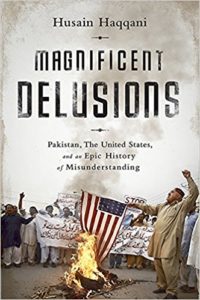
It is often said that Pakistan’s political landscape is dominated by 3 A’s (Allah, Army, and America). The discussion on US-Pakistan relations in the first book forms the basis of his second book, Magnificent Delusions. Four years ago, I wrote a couple of articles, titled ‘Good Ally, Bad Enemy?’ reviewing US-Pakistan relations with excerpts from HH’s second book alongside the works of Carlotta Gall, Gary Bass and Daniel Markey (1. here 2. here). I’ll mention some quotes from HH’s book that I used in those articles.
“Anti-western propaganda was often unleashed precisely so Pakistani officials could argue that the United States had to support Pakistan against India, so as to preserve its alliance with them. Few Pakistanis knew how much their country and its armed forces had become dependent on US assistance.”
‘James L. Langley, American Ambassador to Pakistan (1957-59) wrote, “Pakistan’s forces are unnecessarily large for dealing with any Afghan threat over Pashtunistan. Pakistan would be of little use to us should perchance worse come to worst and India go communist… One of the most disturbing attitudes I have encountered in the highest political places here is that the United States must keep up and increase its aid to Pakistan, and conversely, that Pakistan is doing the United States a favor in accepting aid, in addition to the Pakistani pro-Western posture in the Baghdad Pact and SEATO and the United Nations, when actually these postures are in part dictated by Pakistani hatred for India.”
“India’s Prime Minister at the time, Indira Gandhi, ‘tried to persuade [Henry] Kissinger to recognize the need for more robust US involvement. She said that Pakistan has felt all these years that it will get support from the United States no matter what it does, and this has encouraged an “adventurous policy.” India is not remotely desirous of territory, and to have the Pakistanis base the whole survival of their country on hostility to India was irritating.”
“When Zia was approached by an American diplomat who conveyed the anxiety on America’s part regarding Pakistan’s nuclear weapons development, Zia said: ‘I am an honorable man. We are an honorable people. I ask you to tell your President that I give him my word of honor as President of Pakistan and as a soldier, that I am not and will not develop a nuclear device or weapon.'”
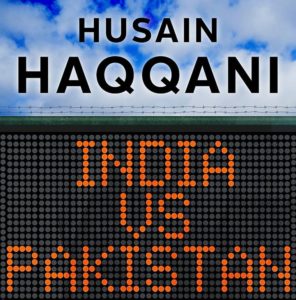
In his third book, HH focussed on certain aspects of the thorny India-Pakistan relationship: History, Kashmir, Nuclear Bombs, and Terrorism. The book is peppered with anecdotes and is a useful read as a primer on the relationship and the difficulties therin. One gets the impression after reading the book that if it were left to the civilians, the two countries would have patched out most conflicts, however, Pakistan’s military and India’s diplomatic bureacracy took maximalist positions to thwart that ambition time and time again.
Why is HH so controversial in Pakistan now?
He was appointed Pakistan’s Ambassador to the US by the PPP-led government (2008-13). It was a turbulent time for Pakistan because barbarians were literally at the gates (Taliban in Swat and Al-Qaeda+TTP in Waziristan). HH has certain views about Pakistan that are not palatable for the military establishment/Deep State. Those views include his insistence on civilian supremacy in the country, deceptive attitudes towards the United States and over-reliance on religion in political discourse. In addition, HH was trying to be a conduit between Pakistan’s civilian government and the United States during his time as the Ambassador (as opposed to a majority of Pakistani Ambassadors to the US who are appointed only after a firm nod from the GHQ) and that irked the establishment even further. It was during his tenure that Osama bin Laden was found and killed in Abbotabad (May, 2011). HH, in an op-ed published last year in Washington Post (read here), took credit for helping the Obama administration in that endeavor (which, in light of Trump’s recent ascension to power, seemed an opportunistic move). Soon after the raid, a conspiracy theory was hatched by the Military Establishment in Pakistan implicating HH. It was alleged that HH had sent Admiral Mike Mullen a memo (on President Asif Zardari’s advice) through a shady in-between named Mansoor Ijaz asking for help from the US in case our generals tried to topple the government in the wake of the OBL raid. The case dragged on in the court and later, a judicial commission but the charge was not proven. HH had to resign as the Ambassador. He has since been at Hudson Institute. In recent years, he has started, with the help of another Pakistani-American, Dr. Mohammad Taqi, SAATH forum (South Asians Against Terrorism and Hatred) that gathers progressive voices in London every October to talk about the future of Pakistan. (Full disclosure: I have been invited to the last two versions of this forum but the first one i couldn’t attend because of visa refusal and the second because I was doing an internship in Houston at the time). I personally agree with most of his views regarding Pakistan but I think his name has been tarnished so much by the Deep State that it is hard to advocate for his name/ideas/books in Pakistan. I believe that he is worth-reading and worth-engaging. If only the military establishment could fight ideas with ideas instead of slander and mis-information.
P.S I have highlighted two events mentioned in the article that were based on stories shared with me by two people I have known for a while. HH presented his own version of events in two tweets last night (05/22/19). Here’s what he tweeted:
The piece contains some ‘I saw X do Y’ without cross-chekcing and is not accurate because of that. (https://twitter.com/husainhaqqani/status/1131390153400958977)
For example, witness no 1 claims he met in NY during 1988 election campaign. Browsing through my passports (all preserved since 1974) would reveal that I was never in US during that period. people lie for all sorts of reasons. That’s why corss-checking is so important. (https://twitter.com/husainhaqqani/status/1131391145546801159)
Witness 2’s claims suggest that he was present in meetings between Musharraf and I or between one of Musharraf’s minitsers and I. Again, should have been easy to verify veracity or lack thereof with a little effort. (https://twitter.com/husainhaqqani/status/1131395539835207680)
Is White Privilege really “sui generis?”
Considering the increasingly South Asian nature of our readership I thought I would add to the mix about some issues, people of colour face in the West.
Namely is “White Privilege” and it definitely is a thing; particular in certain sectors like entertainment. Furthermore it’s gotten to the point where the mighty and clever get away with enough to make sure they are still able to field white American stars in ethnic roles. Case example is Isle of Dogs, which is set in Japan but is entirely Euro-American in cast (I could be wrong but I didn’t check this in detail but Bryan C, Ed N, Frances D & Jeff G were the star cast among others).
This is not the point of my post to discuss white privilege. So far there have been two approaches to WP:
(1.) Angry Minority Approach: The tack taken by African Americans, Latinx & a smattering of Muslim-Jews-Hindus to tear down the edifice of institutional racism.
(2) Model Minority Approach: sort of the Jewish mode now followed by Asians. Let’s reach the top and be twice as good as the best.
However my approach is simple, which is to mock white privilege simply because it’s an ego-boost for under-achieving woke white liberals to feel good. I have a few example I can link to but I don’t want to cast aspersions..
The way we are subjected to the concept of white privilege is as though it is some mutated form of noblesse obligee. While I’m happy to concede that HM the Queen and Prince William are born with some privilege (the reigning monarch was Queen of Pakistan at some point) I’m not really going to assume that just because someone is white they are automatically better placed than me.
I do tire of Instagram and Facebook videos of woke white people educating other white people (there was an issue on redlining) featuring the token minority to insulate against claims of racism.
Being white or light is really no big deal; it’s only when society gives so much credence or Weight to it, do we make it a thing. When liberal white dudes are declaiming the construct whiteness they are in fact parading their own status; it’s all very warped..
Ps: My title refers to the fact that in India, there is Parsi & Brahmin privilege, there is WASP/Persian (subtle) privilege in the Bahá’í community etc.
Toba Tek Singh
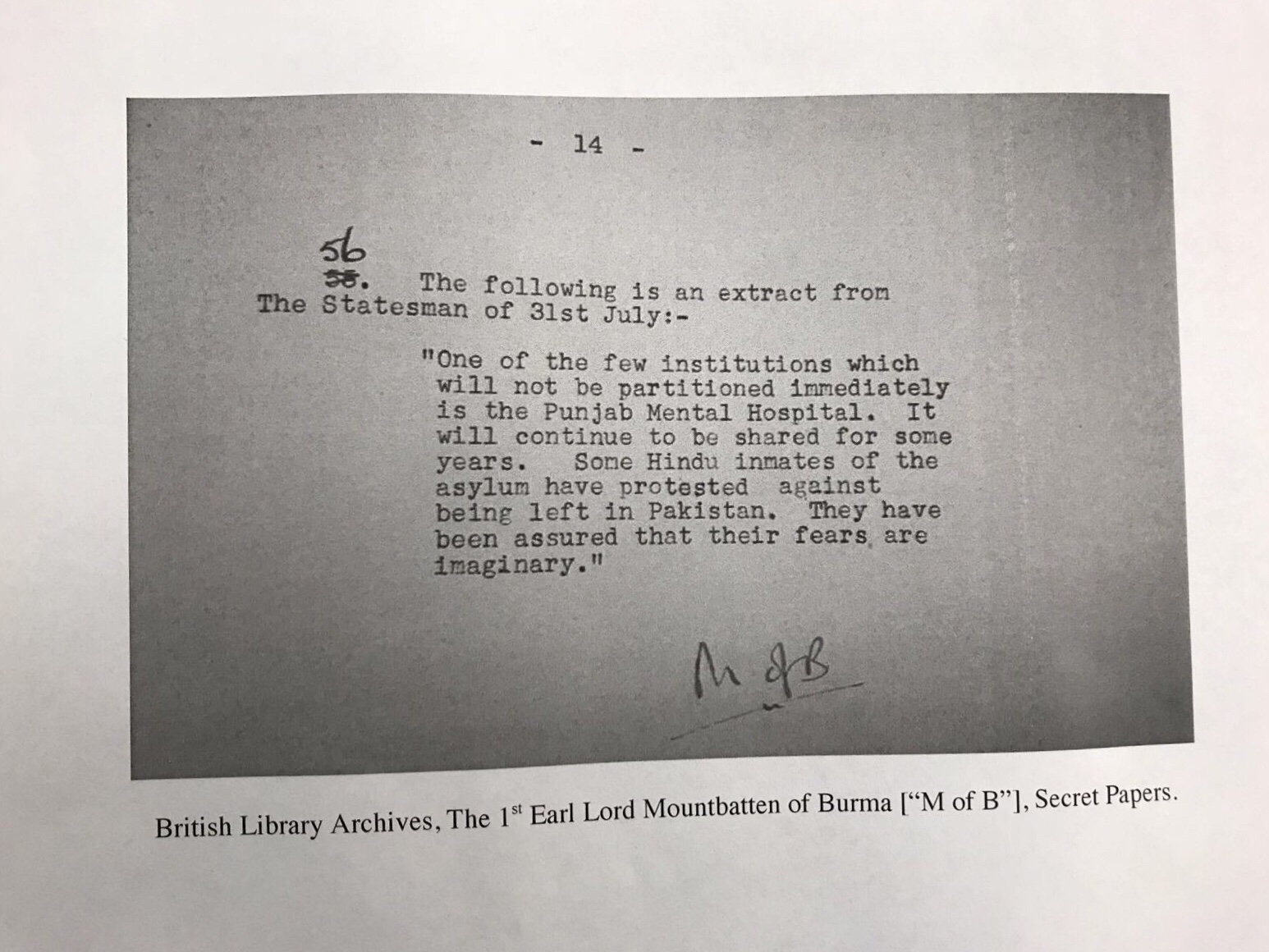
Brown Pundits, big in India!
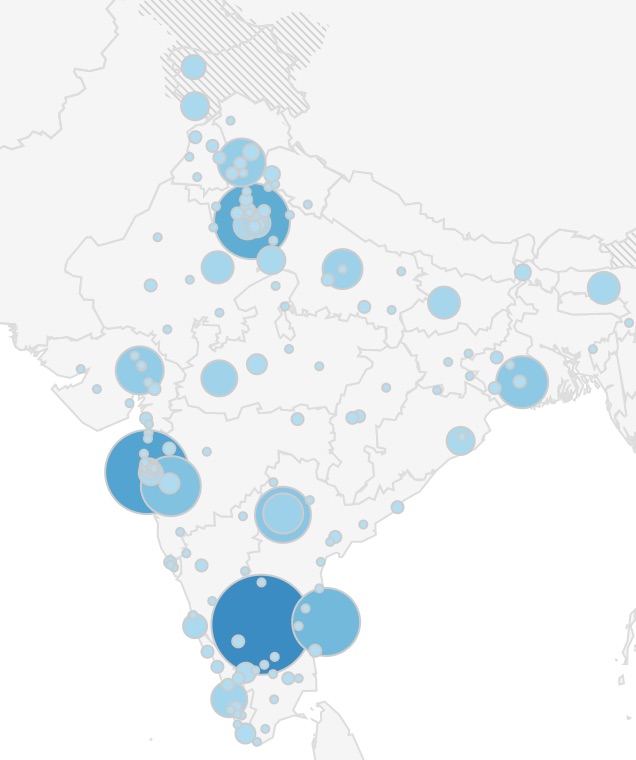
I’ve mentioned this before, but I’ll reiterate something I’ve noticed recently: this website is getting bigger and bigger in India. More precisely, though traffic is increasing in the USA, traffic is increasing from Indian IPs even faster.
Here is the breakdown for the last month:
| Country | % Users |
| United States | 35% |
| India | 29% |
| UK | 6% |
| Canada | 5% |
| Pakistan | 5% |
| Australia | 2% |
| Germany | 1% |
| France | 1% |
| UAE | 1% |
| Bangladesh | 1% |
In terms of where the traffic is coming from, the map above shows the cities.
I’m of two feelings about this.
- This is going to cause issues because of cultural differences. Educated Indians speak English, but norms and idioms differ. In general, my personal strategy is to hegemonically impose American norms.
- Over the past few years I have become bearish on the United States, and bullish on India and China. I’m very curious what people in Asia think, because I think the Asian future is coming at us more quickly than I’d anticipated just a few years ago (American decline, rather than Asian ascension being a cause).
Our existence is an offense to moderate Muslims!
I’m really not incredibly invested in these internecine BP conversations, but this kind of comment honestly convinces me of deep incommensurability:
Perhaps if you don’t go around publicly announcing that you are an ex-Muslim, you will face less problems.
There are lots of “Muslims” who barely practice the religion. But for form’s sake, we say that we believe in Allah and in the Prophet of God. Especially if we have family in Muslim countries.
First, I don’t face problems. But I sympathize with people who are being murdered on account of their irreligion in Muslim countries. I have friends who are Bangladeshi immigrants who were friends with people who were murdered for their lack of belief. It’s pretty disturbing.
So why do I announce my atheism? Because in this country I can. I’m an ex-Muslim only from the perspective of Muslims and anti-Muslim racists. The two groups actually agree on a lot. Because Muslims and anti-Muslims assume I’m a Muslim theist of some sort, of course, I have to announce it so they won’t be confused.
It’s my own conceit and privilege to be wedded more to substance than forms. Now, there are American Muslims like Omar Ali who seems at peace with the substance as well as privileges of Western liberalism (I believe the above individual is an American Muslim?). So I’m not going to full Islamophobe, but these sorts of attitudes suggesting it’s more seemly that we irtidads go back into the closet so preserve public sensitivities really make me suspicious of the Submitters.
I guess this sort of exchange has actually made me more sympathetic to “internet Hindus.” When judgment day comes, go with the side less likely to kill you!
South Asians and “communalism”
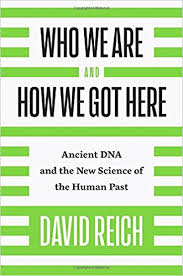 In Who We Are and How We Got Here one of the things that David Reich states is that while China consists to a great extent of one large ethnic-genetic group, India (South Asia) is a collection of many ethnic-genetic groups. To some extent, this is not entirely surprising. People from the far south of the subcontinent look very different from people from Kashmir or Punjab.
In Who We Are and How We Got Here one of the things that David Reich states is that while China consists to a great extent of one large ethnic-genetic group, India (South Asia) is a collection of many ethnic-genetic groups. To some extent, this is not entirely surprising. People from the far south of the subcontinent look very different from people from Kashmir or Punjab.
But that’s really not what Reich is talking about. People in Hebei look quite different from people in Guandong. Perhaps less different than a Tamil from a Kashmiri, but still quite different. But these regional differences grade into each other along a cline.
South Asia is different because strong genetic structure persists within regions. Both Tamil and Bengali Brahmins share some distinctive genes with local populations, but genetically they’re still a bit closer on the whole to Brahmins from Uttar Pradesh (I say this because I’ve looked at a fair number of genotypes of these groups). Similarly, Chamars from Uttar Pradesh and Dalits from Tamil Nadu share more with each other than either do with Brahmins from their own regions (though again, Chamars share more with Brahmins from Uttar Pradesh than Dalits from Tamil Nadu, in part because of gene flow from Indo-Aryan steppe pastoralists into almost all non-Munda people in the Indo-Gangetic plain).
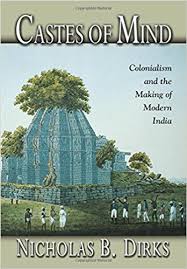 When I read Castes of Mind: Colonialism and the Making of Modern India in the middle 2000s it seemed a persuasive enough argument to me. I had read other things about caste during that period, by both Indians and non-Indians. The authors were historians and anthropologists and emphasized the cultural and social preconditions variables shaping the emergence of caste..
When I read Castes of Mind: Colonialism and the Making of Modern India in the middle 2000s it seemed a persuasive enough argument to me. I had read other things about caste during that period, by both Indians and non-Indians. The authors were historians and anthropologists and emphasized the cultural and social preconditions variables shaping the emergence of caste..
The genetic material at that time did not have the power to detect fine-grained differences (classical autosomal markers) or were only at a single locus (Y, or, more often mtDNA). By the middle to late 2000s there was already suggestion from Y/mtDNA that there was some serious population structure in South Asia, but there wasn’t anything definitive.
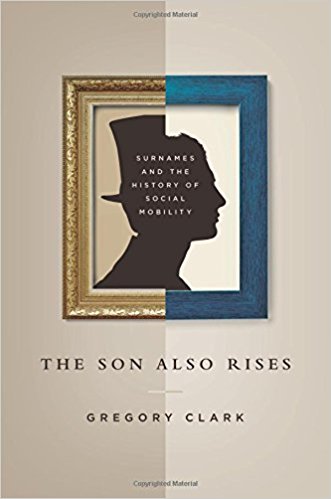 A full reading of works such as Castes of Mind leaves the impression that though some aspect of caste (broad varnas) are ancient, much of the elaboration and detail is recent, and probably due to British rationalization. The full title speaks to that reality.
A full reading of works such as Castes of Mind leaves the impression that though some aspect of caste (broad varnas) are ancient, much of the elaboration and detail is recent, and probably due to British rationalization. The full title speaks to that reality.
This is one reason I was surprised by the results from genome-wide analyses of Indian populations when they first came out. On the whole, populations at the top of the caste hierarchy were genetically distant from those at the bottom, and the broad pattern of the differences was mostly consistent across all of South Asia.
To give a concrete example, there are “lower caste” groups in Punjab which may have more steppe pastoralist ancestry than South Indian Brahmins. But within Punjab “highest caste” groups still have more ancestry than “lower caste” groups.
But this wasn’t the most shocking aspect. That was the fact that many castes are genetically quite distant, and anciently so. In a recent paper, The promise of disease gene discovery in South Asia:
We identify 81 unique groups, of which 14 have estimated census sizes of more than a million, that descend from founder events more extreme than those in Ashkenazi Jews and Finns, both of which have high rates of recessive disease due to founder events.
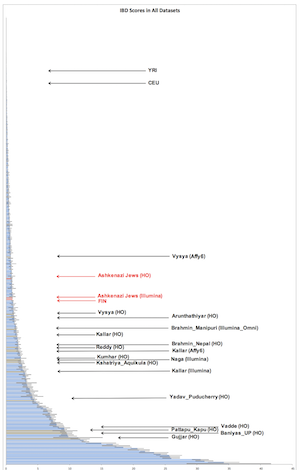 Some of this is due to consanguinity among Muslims and some South Indian groups, but much of it is not. Rather, it’s because genetically it looks like many Indian communities stopped intermarrying ~1,500 years ago. This reduces the effective number of ancestors even in a large population due to increased drift. At a recent conference, an Indian geneticist suggested that this might have something to do with the crystallization of caste Hinduism during the Gupta period. I can’t speak to that, but anyone who has looked at the data sees this pattern.
Some of this is due to consanguinity among Muslims and some South Indian groups, but much of it is not. Rather, it’s because genetically it looks like many Indian communities stopped intermarrying ~1,500 years ago. This reduces the effective number of ancestors even in a large population due to increased drift. At a recent conference, an Indian geneticist suggested that this might have something to do with the crystallization of caste Hinduism during the Gupta period. I can’t speak to that, but anyone who has looked at the data sees this pattern.
To illustrate what I’m talking about, assume ~1% introgression of genes from the surrounding population in a small group. Within 1,500 years 50% of the genes of the target population will have been “replaced.” The genetic patterns you see in many South Asian groups indicates far less than 1% genetic exchange per generation for over 1,000 years in these small groups.
But this post isn’t really about genetics. Rather, I began with the genetics because as an outsider in some sense I’ve never really grokked South Asian communalism on a deep level. Yet the genetics tells us that South Asians are extremely endogamous. It is unlikely that this would hold unless the groups were able to suppress individuality to a great extent. Though people tend to marry/mate with those “like them”, usually the frequency is not 99.99% per generation.
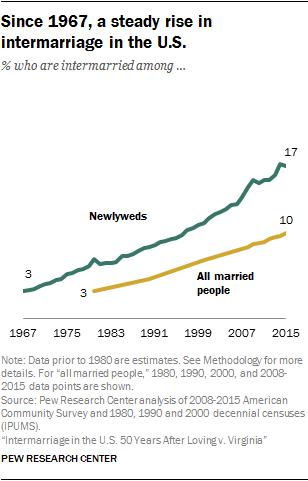 In the United States, things are different. Interracial marriage rates were ~1% in 1960.* This was still during the tail end of Jim Crow in much of the south. Since then the fraction of couples who are in ethno-racial mixed marriages keeps increasing and is almost 20% today. There is still a lot of assortative mating, and ingroup preference. But fractions in the 10-20% range are worrisome for anyone who is concerned about genetic cohesion over a few generations.
In the United States, things are different. Interracial marriage rates were ~1% in 1960.* This was still during the tail end of Jim Crow in much of the south. Since then the fraction of couples who are in ethno-racial mixed marriages keeps increasing and is almost 20% today. There is still a lot of assortative mating, and ingroup preference. But fractions in the 10-20% range are worrisome for anyone who is concerned about genetic cohesion over a few generations.
Though some level of group solidarity exists, explicitly among minorities, and implicitly for non-minorities, individual choice is in the catbird seat today. This was not always so. By the time I was growing up in the 1980s social norms had relaxed, but a black-white couple still warranted some attention and notice. In earlier periods interracial couples had to suffer through much more ostracism from their families and broader society.
In some South Asian contexts, this seems to be true to this day. But unlike the United States the situation is much more complex, with numerous ethno-religious-linguistic subgroups operating in a fractured landscape of power and identity.
I have wondered in part whether the South Asian fixation on sensitivity and feeling when it came to offense and insult is a function of the strong communal/collective aspect to honor, identity, and decision-making. Muslims outside of South Asia are similar to this, and in the Islamic context the rationale is quite explicit: non-Muslims and heretics are tolerated so long as they don’t challenge the public ethno-cultural supremacy of Islam. For example, atheism is punished less because of deviation from religious orthodoxy and more because it destabilizes public order and is seen as a crime against the state.
The conflicts between Hindus and Muslims in relation to religious parades have their clear analogs to strife between the dominant Catholics and the new Protestant communities in Latin America. But among Hindus the same tendencies crop up in inter-caste conflicts. The sexual brutalization that is sometimes reported of lower caste women by upper castes in parts of the Gangetic plain is a trivial consequence of the power that land-holding upper castes have over all the levers of power over low castes in certain localities. Lower caste men are powerless to defend their women against violation, just as in the American South enslaved black men couldn’t shield their womenfolk from the sexual advances of white men.
Will any of this change? I suspect that economic development and urbanization is the acid that will start to break down these old tendencies and relations in South Asia. It also seems clear that all South Asian communities which are transplanted to the more individualistic West have issues with the fact that collective and communal power is not given any public role, and in a de facto sense has to face the reality that individual choices in mates and cultural orientation are much more viable in the West.
This is particularly important to keep in mind on a blog like this, where many people are reading from South Asia (mostly India) and many are reading in the USA and UK. The conflict of values and signifiers occasionally plays out in these comments! For example, a Hindu nationalist commenter once referred to me as “Secular.” As an atheist, materialist, and someone who is irreligious in terms of identity and affiliation, secular describes me perfectly…in the West. But I was aware of the connotations of the term in India in particular, I told him that in fact, I wasn’t “Secular” in the way he was suggested. The reality is that unlike Indian Americans I don’t take a strong interest in what India does so long as it’s a reasonably stable regime, and so don’t signal my affiliation with Hindu nationalism or anti-Hindu nationalism.
* Latinos were not counted as part of this in 1960, so the rate looking at those numbers is 0.4%. I assume this is an underestimate because of Latinos.
Is this even “not wrong?”
After my hiatus from BP I also stopped reading the other two blogs I follow (SS & GNXP). I was just wading back into them when I was confronted with the above and below.
I’m not comfortable with anti-Indian sentiments and it’s not only because my wife is Indian but that ultimately Brown has to stand with Brown (colonialism has already divided us far too much).
I don’t have context as I haven’t read the previous posts but I’m not liking the tenor of either the post above or the comment below; am I over-reacting??
I can say what u like about South Asia or even India because to some extent all of us in the blog (even Commentariat) is Indian by way of heritage.
We are the bastard spawn of the Aryan fathers & ASI mothers – well for our beautiful, fair & lovely Brahmins it would only be ASI grandmothers I guess 😉
BP in a sentence
“Civilised discussions of contentious ideas.”
Thankfully no one I know in real life reads BP so I can touch on some experiences.
One of the Bahais in my local community is an Ivy League overachiever. Really nice guy and we are good friends (we have an age gap of a decade; he is younger).
On one of our catchups my wife asked him some difficult questions about the Faith (alas we too have our skeletons but we don’t talk about it much).
He is a sparkling witty intellect but on this topic he just clamped up.
I remember when I was his age I was sitting in the house of a another good friend (frenemy). I made some remarks about Faith’s highest body (polite of course) but difficult topics. At a moment his mood flipped and he said if I continued he would ask me to leave.
The irony is that this devout chap is a notorious playboy but when it comes to the Faith he just couldn’t intellectually process “the difficult questions.”
That’s why I believers should be agnostics; it doesn’t mean we don’t believe but that we have to humility to know that we don’t actually know.
It would make for a much more civilised world..
